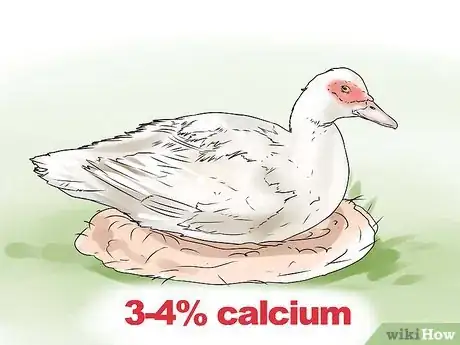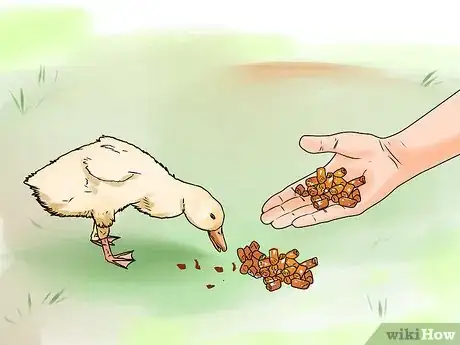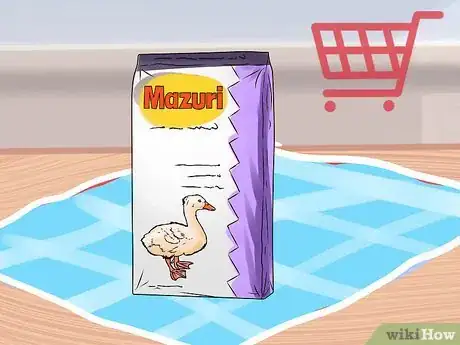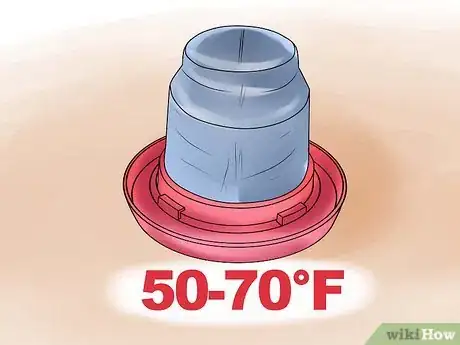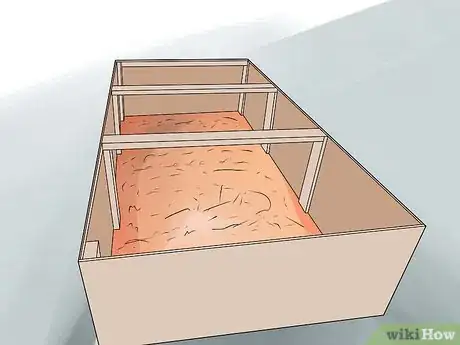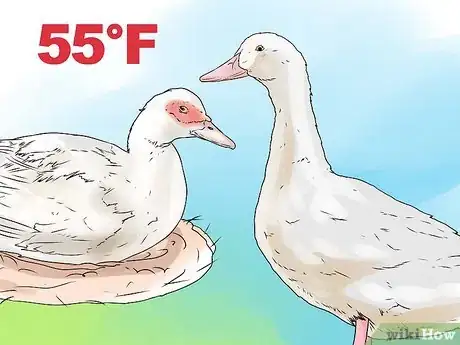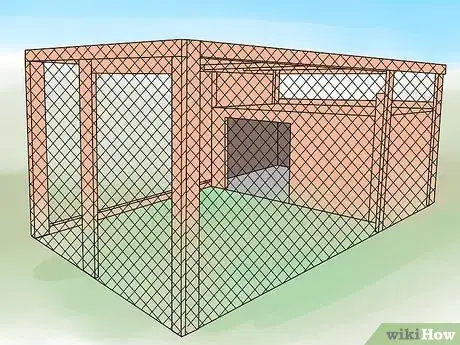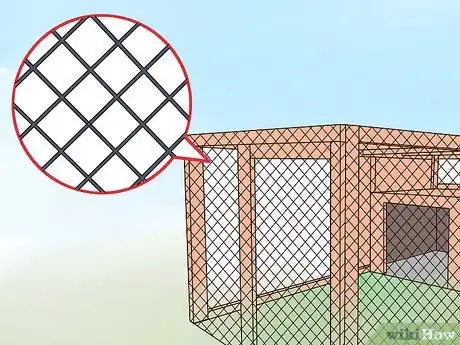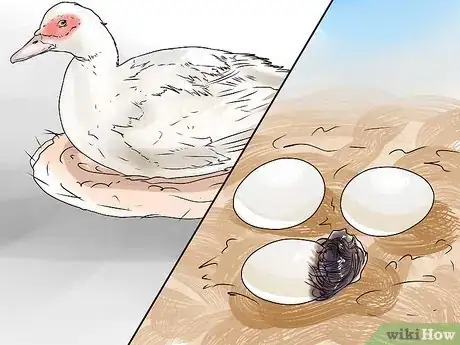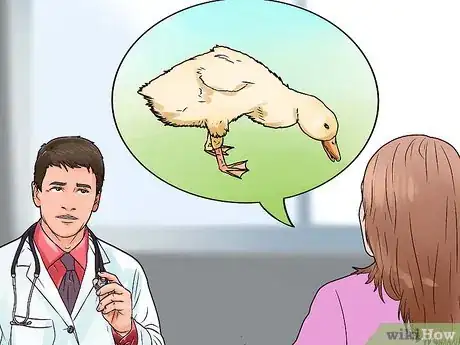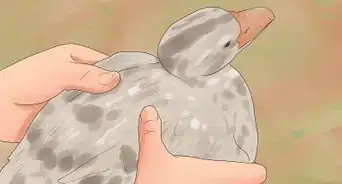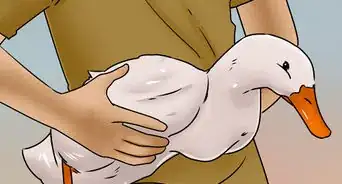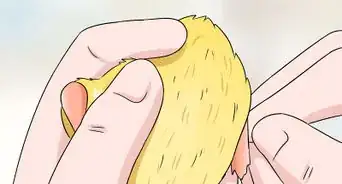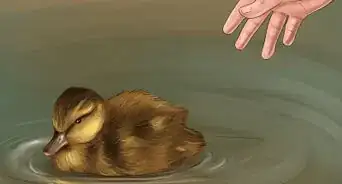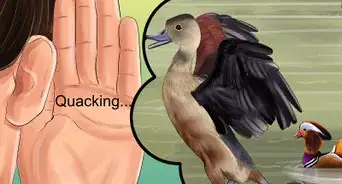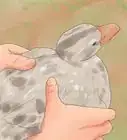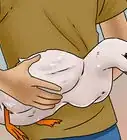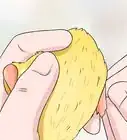wikiHow is a “wiki,” similar to Wikipedia, which means that many of our articles are co-written by multiple authors. To create this article, 43 people, some anonymous, worked to edit and improve it over time.
wikiHow marks an article as reader-approved once it receives enough positive feedback. This article received 12 testimonials and 94% of readers who voted found it helpful, earning it our reader-approved status.
This article has been viewed 587,714 times.
Learn more...
Taking care of a duck as a pet can be a rewarding experience. In general, ducks are more difficult to take care of than other pets, such as dogs or cats, because their environment needs to be closely monitored. They are also social animals that like to be kept in pairs or groups. There are many different kinds of ducks that vary in size, shape, and color, but their basic needs are identical.[1] You will need to feed them well, protect them from predators and weather, and keep their environment clean.
Steps
Feeding the Ducks
-
1Feed ducklings and adolescent ducks a diet that is 18-20% protein.[2] Young ducks grow quickly, and as a result, they need food that has a lot of protein and is high in calories. For the first 3 weeks of life, feed them a starter diet that is 18-20% protein and consists of small pellets (about 1/8").
- Duck food can be bought at your local pet store. Some reputable manufacturers of duck food are Purina, Mazuri, or Gunter.
- Though chicken feed can be substituted for duck food, chicken feed should not be fed to ducklings.[3]
- Once the ducklings reach 20 weeks of age, you can substitute duck food for chicken feed with the same amount of protein.
-
2Feed ducks over the age of 3 weeks a diet that is 14% protein. Male and female ducks will both need the same amount of protein. Check the back of your duck food bag for nutritional information.Advertisement
-
3Feed laying ducks a 16-17% protein diet that has 3-4% calcium.[4] This amount of calcium is needed for laying ducks to make quality eggs. You can begin to feed the female ducks this higher protein diet in the spring time, when they are likely to begin laying eggs.
-
4Offer occasional treats like corn, carrots, and greens like cucumber or broccoli. These treats should compromise no more than 15-20% of a duck’s diet. Cut all treats into small pieces. You can also let your duck graze outside, provided the area they are grazing has no pesticides or other toxic materials.
- Don’t season or cook these treats. Feed them raw.
- Bread, chocolate, onion, garlic, popcorn, avocados, and citrus fruits should not be fed to ducks.
-
5Provide food at all times during the day.[5] Ducks should be allowed to graze freely on their food. Remove the food at night so it does not begin to rot or attract ants and rats. Each duck will consume about 6-7 ounces of food per day, but bigger ducks may eat a bit more.
-
6Buy small amounts of fresh food more frequently. Buying duck food in bulk will work for feeding large flocks, but for smaller flocks, buy small amounts of food frequently so they will have fresh food all the time. Moldy food can make ducks very sick. Store leftover duck food where it can keep dry.
-
7Provide cool 50-70°F (10-21°C) and clean drinking water. This water can be provided in a trough, an outdoor pond, or a shallow bucket. Any large, open container the ducks can fit their bill in will suffice. If you decide to use a watering system, such as those designed for chickens or turkeys, just make sure the ducks can reach the water.
- The water should always be clean, as ducks are especially prone to botulism.
- Change the water daily.
Housing the Ducks
-
1Keep newborn ducks in a brooder for 4-6 weeks. Ducklings cannot yet regulate their body temperature, so a brooder (a heated poultry box) is necessary. Newborn ducks need to be kept at 86°F (30°C) for the first week and at 81°F (27°C) after that.
- After 4-6 weeks, ducks can regulate their temperature and no longer need to be kept in a brooder.
- Brooders can easily be bought online or at a pet store.
- If your ducklings seem to be panting, turn the brooder temperature down a couple of degrees.
-
2Keep adult ducks at their optimum temperature. Ducks that are 35 days old or older and ducks who are laying eggs need to be kept at 55°F (13°C). Ducks that are clustering together are likely cold, and if they are panting, they are too warm. Watch for this, and adjust the temperature accordingly.
- Provide cool water for ducks to swim in if the weather is extremely hot. A small wading pool can work well for this purpose. However, if you don't want them going into your own swimming pool, check out the wikiHow How to Keep Ducks Out of a Pool.
- Keep the ducks somewhere you can maintain the temperature.
-
3Provide a pen large enough for the ducks to walk around. Newborn ducklings only require 289 square centimeters (.31 sq ft) each to roam, and this amount increases as they age. Ducks 3 days of age need 1024 sq cm (1.10 sq ft), ducks 1 week old need 2304 sq cm (2.48), and ducks laying eggs need 2500-2809 sq cm (3 sq ft).
-
4House the ducks in a pen with adequate protection and flooring. If the pen has wire floors, floors for ducklings under 3 weeks should be constructed of 1.9 cm (3/4 inch) mesh and 12-gauge welded wire. This should be attached to a frame designed to keep the wire flat and minimize manure accumulation. For ducks over 3 weeks, use 2.5 cm (1 inch) mesh. Vinyl coated wire or smooth galvanized wire is preferred.
- The pen should be secure enough so the ducks do not escape.
- The shelter should protect from raccoons or bobcats, especially if the shelter is outside.
- Non-wire floors are fine, as long as there aren’t lots of places the ducks can scrap their fragile feet.
-
5Keep the housing clean and well-ventilated. Ducks are messy birds with liquid excrement, which is why you must sanitize the housing with a non-toxic disinfectant at least 3 times a week.[6] Their housing also needs ventilation, such as an open window. If your ducks are being kept indoors, be sure they are getting air.
-
6Provide the ducks with 14-17 hours of light every day. At many points during the year, the sun is not out this long. Turn on artificial lights once the sun sets to provide 14-17 hours of light for the ducks.
-
7Allow nesting mothers to hatch their eggs. During the spring time, female ducks will begin to lay eggs, so you should provide them with plenty of peace and quiet, food, and a nearby water source. If you do not want more ducklings, simply remove the eggs from the laying duck soon after she lays them. Ducks like to hide their eggs, so you may find them unexpectedly.
- It is normal for a duck to abandon her eggs. She may hatch them next time.
- Ducks can lay one egg at a time or 14, depending on the duck.
- Once she has laid about 1 dozen eggs, they will hatch in about one month, though some may not survive.[7]
- Place newborns in the brooder.
Interacting with the Ducks
-
1Talk to your ducks. Just like humans, ducks can hear and respond to sound. Talking to your ducks will help you bond with them. You can name them, too.
-
2Play gently with the ducks. Ducks have been known to do tricks and be somewhat affectionate. You can buy some bird toys to play with them, or simply take the ducks in the bathtub for a swim. Every duck has a different personality. They may even play with string or try to dig holes.
-
3Take your ducks to the vet if they look ill. During feeding time, observe your ducks for any health problems. If they seem lethargic, are losing feathers, or don’t have an appetite, you should take them to a vet. The vet will provide care and necessary medication.
Community Q&A
-
QuestionWhat does it mean if they quack at me a lot?
 Community AnswerThis is normal. Ducks usually quack to communicate or to warn other ducks. If you move fast they will probably start quacking frantically.
Community AnswerThis is normal. Ducks usually quack to communicate or to warn other ducks. If you move fast they will probably start quacking frantically. -
QuestionCan ducks survive 100 degree weather with cold water and plenty of shade?
 Community AnswerYes, as long as you make sure they have a place to cool down. They also enjoy frozen peas as a treat in their water!
Community AnswerYes, as long as you make sure they have a place to cool down. They also enjoy frozen peas as a treat in their water! -
QuestionHow do I earn a baby duck's trust? I got 2 recently, and I think they're terrified of me.
 XXGOALXxCommunity AnswerLove and care for them as much as you can. Give them time to get used to you. Speak in a low, soothing tone and don't make any sudden movements, and let them come to you.
XXGOALXxCommunity AnswerLove and care for them as much as you can. Give them time to get used to you. Speak in a low, soothing tone and don't make any sudden movements, and let them come to you.
Warnings
- Do not get small children any pet they cannot care for. Ducks need a lot of attention and maintenance.⧼thumbs_response⧽
- Ducks are prey; protect them as best you can from raccoons, mountain lions, and other predators.⧼thumbs_response⧽
Things You'll Need
- Two or more ducks
- Quality duck food
- Low bucket for feeding that they can reach
- Low bucket of fresh water
- Pen/barn/shed
- A bathtub or small pond they can swim in
- Duck books/magazines (optional)
References
- ↑ http://www.forthebirdsdvm.com/pages/care-and-feeding-of-pet-ducks
- ↑ http://www.forthebirdsdvm.com/pages/care-and-feeding-of-pet-ducks
- ↑ http://kb.rspca.org.au/What-should-I-feed-my-pet-ducks_519.html
- ↑ https://poultrykeeper.com/duck-keeping/feeding-ducks/
- ↑ http://www.ces.ncsu.edu/depts/poulsci/tech_manuals/feeding_ducks.html
- ↑ http://www.ces.ncsu.edu/depts/poulsci/tech_manuals/feeding_ducks.html
- ↑ http://www.liveducks.com/nesting.html
About This Article
If you want to take care of a pet duck, you should give it duck food that contains 18-20% protein until it is 3 weeks old. After that time, you can switch to chicken food that is supplemented with some fresh vegetables, like lettuce and carrots. For the first 4-6 weeks, house your ducks in a brooder. When the ducks are nearly grown, you should move them to an outdoor pen that has fresh water and at least 3 square feet per duck of space. To learn how to interact with your duck, read on!


